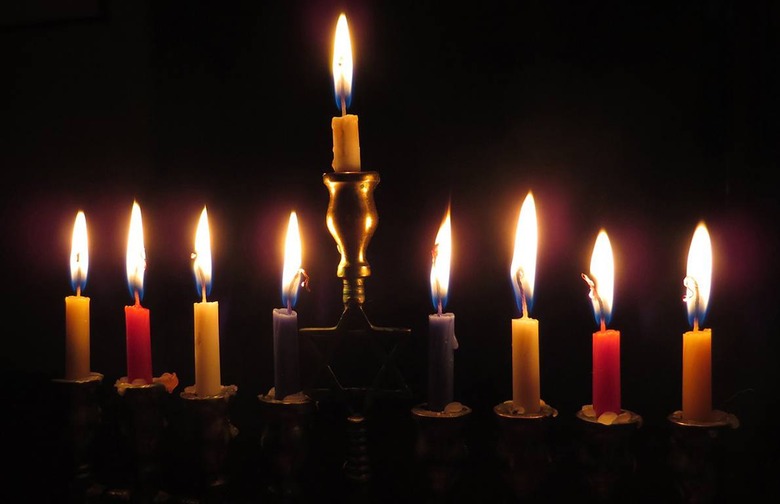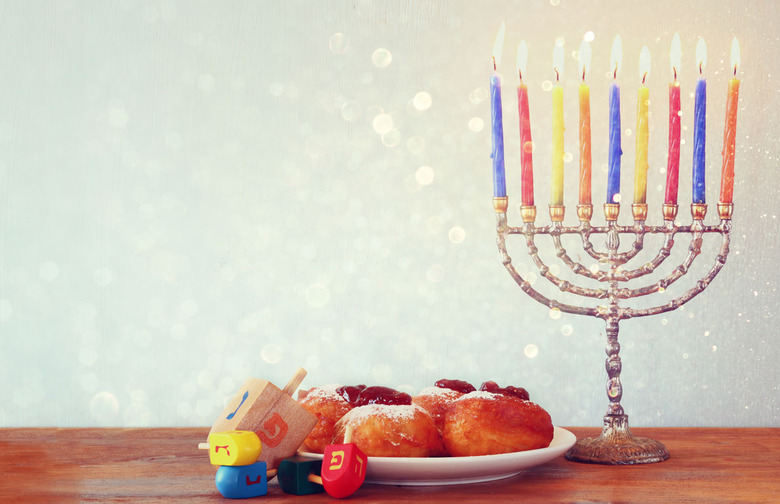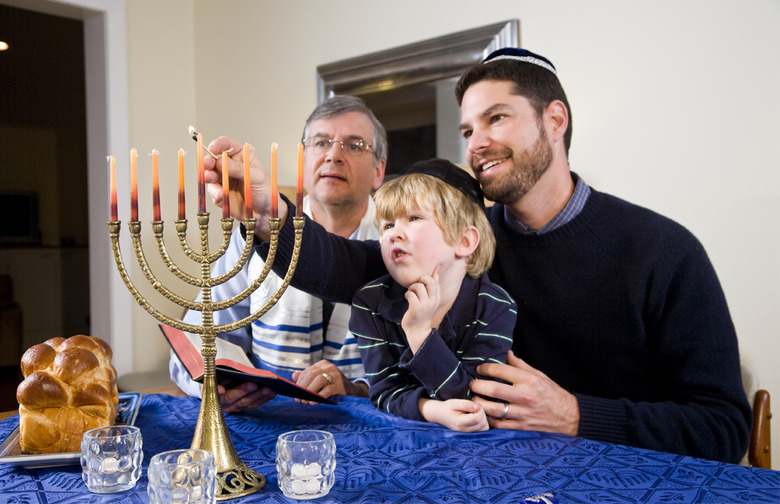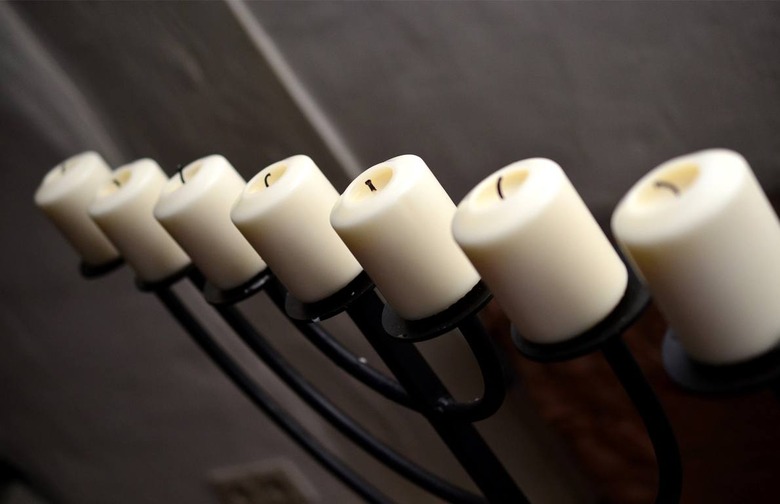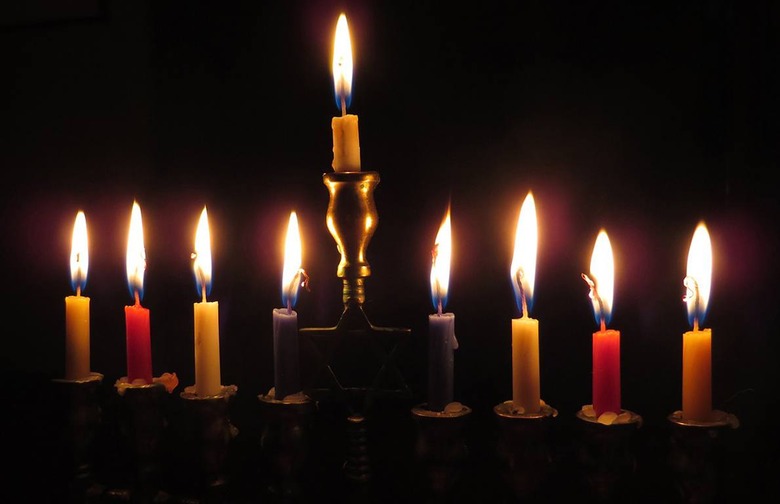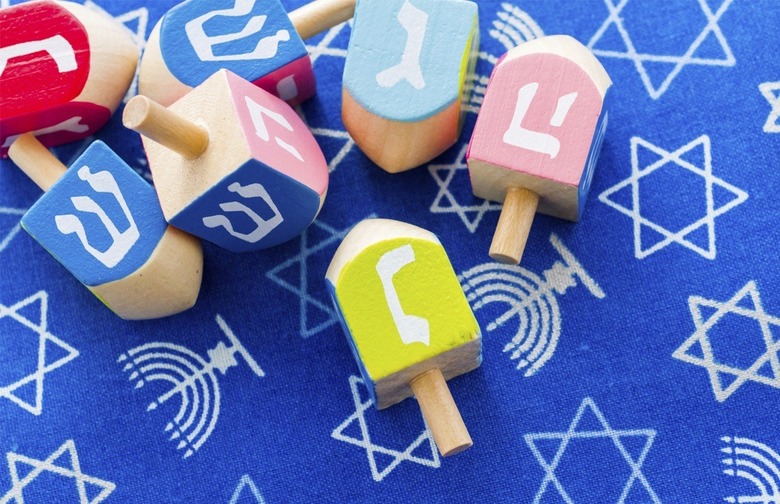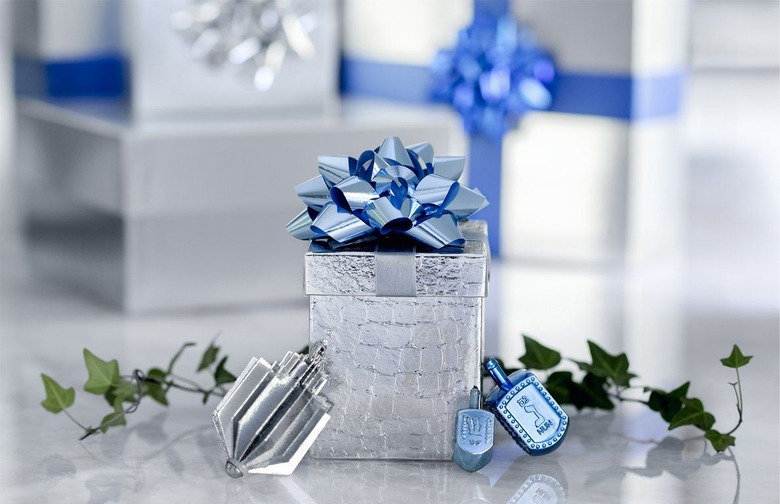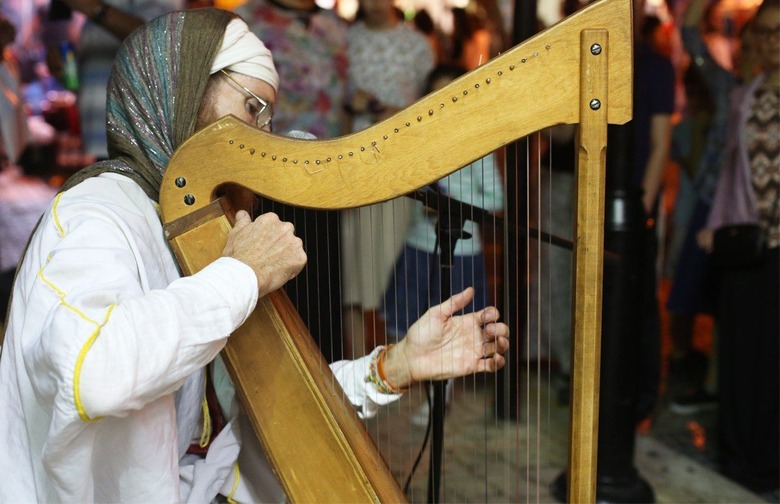A Gentile's Guide To Hanukkah Slideshow
So, for those gentiles out there who want to learn about a different religion or celebrate a new holiday with their Jewish friends this December, we've put together a little Hanukkah 101 for you. From why this occasion is celebrated every year to what a menorah is to what kind of delicious, traditional foods you can fry up, you now have a handy guide to learn from.
When Is Hanukkah?
Unlike Christmas and Kwanzaa, the dates of Hanukkah change every year with the Hebrew calendar. Hanukkah begins on the evening of the 25th day of Kislev, a month in the Jewish lunar calendar year, which does not align with the solar, 365-day calendar most people are familiar with. The Festival of Lights runs for eight days. This year, Hanukkah will begin Saturday, Dec. 24, at sundown, and will end on the evening of Jan. 1, 2017.
Why Is Hanukkah Celebrated?
Hanukkah is commemorated to honor the Jewish people's retaking of the Second Temple of Jerusalem from the Greek-Syrian repressors in 164 B.C. Beginning in 175 B.C., the Syrian king Antiochus IV Epiphanes took over for his father to rule the Seleucid Empire, according to History.com. While his father allowed the Jews to worship their religion, Antiochus outlawed Jewish rites and rituals, forcing the people to eat pig meat and bow to Greek Gods. In 168 B.C., Antiochus' soldiers took over Jerusalem and the sacred Second Temple, building an altar to Zeus in its place. In 166 B.C., the Maccabean Revolt broke out against Antiochus and the Jewish army successfully drove the Syrian army out of Jerusalem. The Jewish people then retook the Second Temple, cleansed it, and lit its menorah.
Though Hanukkah has been commercialized through its association with Christmastime, it is technically considered a minor Jewish holiday. It's not nearly as important as other holidays like Rosh Hashanah, Yom Kippur, and Pesach (Passover). Unlike some other holidays, there's no requirement to abstain from work.
The Menorah
Hanukkah celebrates the Miracle of Oil: After the Jews retook the Second Temple of Jerusalem, there was only enough untainted oil for one day, but, miraculously, the small amount lasted for eight nights, allowing them plenty of time to find a fresh supply of olive oil. To commemorate this miracle, the holiday of Hanukkah was created.
Traditionally, the standard menorah at Jewish temples has seven branches, and is meant to be lit each day with untainted olive oil to burn through the night. seven-branched menorah is prohibited for use outside of temple, so the Hanukkah menorah (called a hanukkiah) has nine branches, one for each night of the holiday and one, called the shamash, that is used to light the other candles.
Hanukkah Foods
Because Hanukkah celebrates the Miracle of Oil, fried foods are a staple for this Jewish holiday. Potato latkes, made with ground potato, flour, egg, and plenty of oil, are the signature dish for Hanukkah. They can be topped with anything from sour cream to applesauce to sugar, depending on what you're in the mood for. Other traditional Hanukkah foods include sufganiyot, jelly-filled doughnuts, and gelt, chocolate coins wrapped in gold foil.
Hanukkah Traditions
Today, Jewish families around the world celebrate Hanukkah for eight days and nights every late fall or early winter. The holiday's main tradition is the nightly lighting of the hanukkiah, or the Hanukkah menorah. The center branch's candle, known as the helper or the "shamash," is lit first all eight nights, and its flame is then used to light the other branches. On the first night, one candle is lit; the second night, two candles; and so on.
Other Hanukkah traditions include eating fried foods, playing dreidel, and exchanging presents.
Dreidel, Dreidel, Dreidel
When Judaism was outlawed by the Greeks in Jerusalem, Jewish people had to read the Torah in secret. To disguise their real activities from the Greek-Syrian soldiers, whenever someone would approach them, the Jewish scholars would hide their texts and start playing with tops, or dreidels, so it looked like they were simply enjoying a game, according to Chabad.org. To honor these Jewish rebels, families still play with dreidels every Hanukkah.
Any number of people can play dreidel, and the game is super easy. Each dreidel has four sides with Hebrew letters: nun, gimel, hay, and shin, which is an acronym for "a great miracle happened there." Every player starts with an equal number of pennies, chocolate coins (called gelt), or any other small treat used as loot. At the beginning of every round, each player puts one piece into a center pot.
Each player then spins the dreidel. If you land on "nun," you get nothing. For "gimel," you get the entire pot. "Hay" means you take half the pot. If you land on "shin," you have to put one piece into the pot.
Hanukkah Gifts
Hanukkah has been lifted into mainstream holiday status thanks to its proximity to Christmas. As the commercialism surrounding Christmas grew, exchanging presents during Hanukkah became common, as well, according to My Jewish Learning.
Hanukkah Music
The radio is inundated with Christmas music every December (and November), but what songs are there for Hanukkah? In addition to the classics such as "Maoz Tzur" and "Hanukkah Oh Hanukkah," there are a few modern Jewish tracks. There's the fun child's song "I Have a Little Dreidel," which was given a fun twist by Julie Silver. There are also more modern Hanukkah songs, such as Adam Sandler's "The Chanukah Song," "Miracle" by Matisyahu, and Peter, Paul & Mary's "Light One Candle."
Now that you know the basics of this Jewish holiday, read how 21 countries around the world celebrate Hanukkah.
